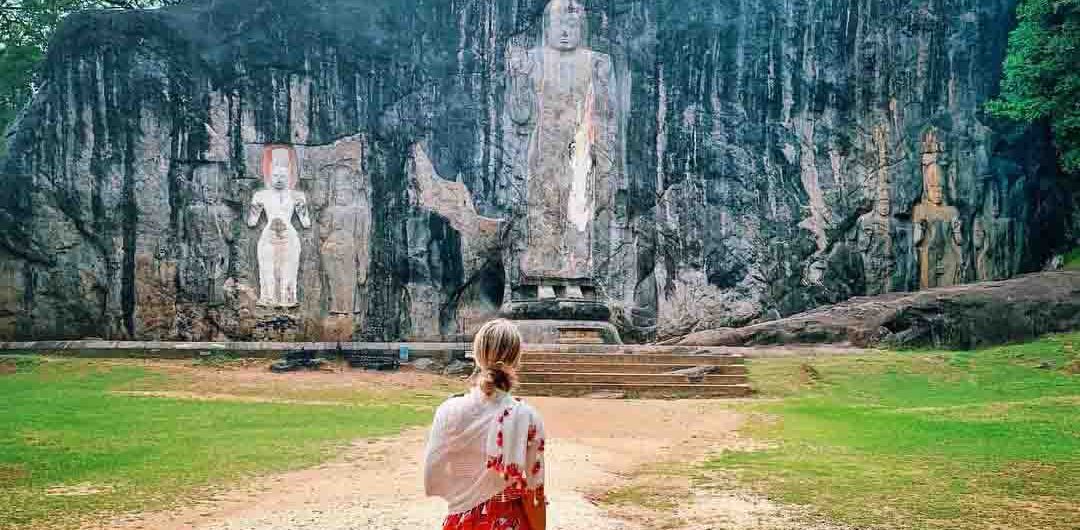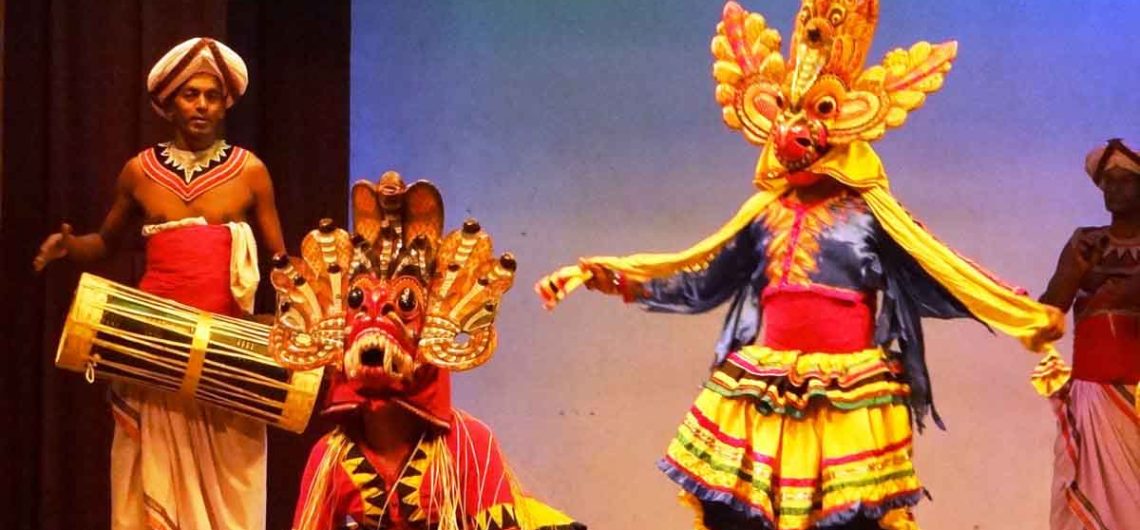Tucked away in the heart of Sri Lanka’s Moneragala District lies a hidden gem for travelers seeking cultural and spiritual enrichment – the awe-inspiring Buduruwagala Buddha Statue. Standing proudly amidst the rugged landscape, this monumental rock temple boasts a history dating back to the 9th or 10th century, offering visitors a glimpse into the rich tapestry of Sri Lanka’s ancient Buddhist heritage.
Carved into the face of a massive cliff, the Buduruwagala complex mesmerizes with its seven magnificent statues, the centerpiece being the tallest ancient Buddha statue in Sri Lanka, soaring to an impressive height of 51 feet (16 meters). The very name “Buduruwagala” translates to “rock with Buddha statues,” aptly describing the essence of this sacred site.
Dating back to the zenith of the Mahayana Buddhist tradition, these intricately carved statues are believed to have once been adorned with vibrant hues, remnants of which still linger in the form of a faint orange hue on the central Buddha statue. The statues stand as silent sentinels, embodying the profound teachings of compassion, wisdom, and enlightenment.
At the heart of the ensemble stands the majestic Buddha statue, depicted in the Samabhanga posture – a stance exuding tranquility and poise. With his right hand raised in the Abhaya Mudra, symbolizing fearlessness and protection, the Buddha radiates a sense of serene assurance to all who behold him.
Flanking the central figure are three statues on either side, each shrouded in mystique and reverence. On the right, the depictions include the compassionate Avalokiteshvara Bodhisattva, the divine Goddess Tara, and Prince Sudhana. On the left, stand the figures of Maitree Bodhisattva, Vajrapani Bodhisattva, and an enigmatic deity, their presence adding layers of symbolism and significance to the sacred tableau.
While the precise purpose of these ancient carvings remains veiled in the mists of time, Buduruwagala is believed to have served as a sanctuary for Mahayana Buddhist monks, offering solace and contemplation amidst the rugged wilderness.
For the intrepid traveler venturing to this sacred site, Buduruwagala offers not just a journey through time but also an opportunity for introspection and spiritual renewal. As you traverse the tranquil lakes and rugged terrain, let the whispers of ancient wisdom guide your steps and awaken your soul to the profound beauty of Sri Lanka’s cultural heritage.
To reach Buduruwagala, one can embark on a picturesque journey from Wellawaya or Thanamalwila, with the final stretch leading through a scenic dirt track flanked by serene lakes teeming with birdlife. Whether arriving by bus or car, the pilgrimage to Buduruwagala promises an unforgettable encounter with the timeless allure of Buddhist artistry and devotion.
As you prepare for your visit, remember to dress modestly out of respect for the sacredness of the site, covering your shoulders and knees. With its timeless beauty and spiritual resonance, Buduruwagala beckons travelers from far and wide to immerse themselves in the profound legacy of Sri Lanka’s ancient Buddhist heritage.



